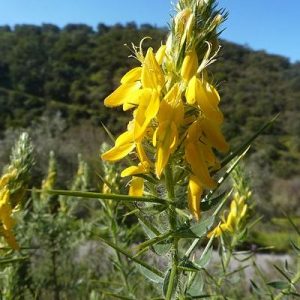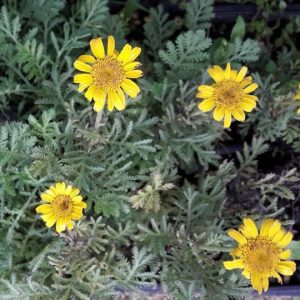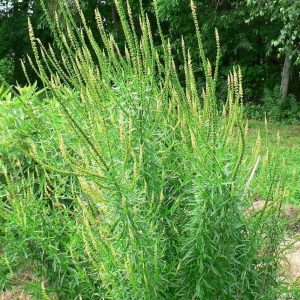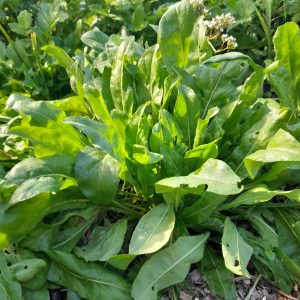LONG TERM OUT OF STOCK
SOLD OUT
OUT OF STOCK
AVAILABLE SPRING
AVAILABLE SUMMER
AVAILABLE AUTUMN
AVAILABLE WINTER
WINTER DORMANT
AVAILABLE SOON
Rubia tinctorum
Long lived herbaceous perennial dye plant. Slightly scrappy to look at, the weak stems often lie along the ground, but can climb up to 1.5m high by means of tiny hooks. Leaves are formed in whorls starlike around the central stem. Flowers in mid-late summer are inconspicuous, with five pale yellow petals, followed by small (4–6 mm diameter) red to black berries in autumn, then the whole plant dies down in winter. The roots can be over a metre long, with side roots which run under the surface of the ground for some distance, sending up new shoots. Madder prefers loamy soils with a constant level of moisture.
Madder roots have been used as a dye for materials such as for leather, wool, cotton and silk for over 5,000 years. Archaeologists have found traces of madder in linen in Tutankhamen’s tomb (1350 BC), and in wool discovered in Norse burial grounds. The minimum age for harvesting is three years, but the best age is five years, when the roots are pencil thick. Fifteen-year old plants produce roots that are 2.5 cm in diameter. If you wish to harvest madder regularly it is best to have three or more beds, and dig them in rotation.
The outer red layer of the root gives the common variety of the dye, the inner yellow layer the refined variety. The dye is fixed to the cloth with help of a mordant, most commonly alum. The roots contain the acid ruberthyrin. By drying, fermenting, or a treatment with acids, this is changed to sugar, alizarin and purpurin. Purpurin is not coloured, but is red when dissolved in alkaline solutions; mixed with clay and treated with alum and ammonia, it gives a brilliant red colourant (madder lake).
9cm pot Certified Organic plant.
Freight: We can send up to 9 plants this size (in 9cm pots) for the same freight price or they can be combined with other grades but this will incur higher freight costs.
More details of freight and packing charges here
Plant photos: Kahikatea Farm
Dye photos reproduced with permission from Michelle Parrish www.localcolordyes.com
N.B. Shipping costs are added AFTER you have placed your order, you will then be emailed an invoice with bank details.

Smallest box rate:
This can fit up to 9 plants in 9cm pots.

Shipping a single tree can be expensive. We may be able to fit more in the box for the same price! See our shipping rates for single and multi tree boxes.

Combining sizes?
No problem, we will work out the best rate for you once you’ve placed your order.
Jo has a passion for growing herbs but is not a qualified herbalist and has no medical background.
We are lucky to have Patricia Beagle working here at times, who is qualified, and some of her advice does appear on these pages, but herbs act differently for different people and can interact with other medicines. We therefore always recommend that you consult with your own qualified health-care practitioner before using herbal products, particularly if you are pregnant, nursing or on any medications.
Kahikatea Farm cannot take any responsibility for any adverse effects from the use of the plants or a plant not having the effect it is reputed to have.



